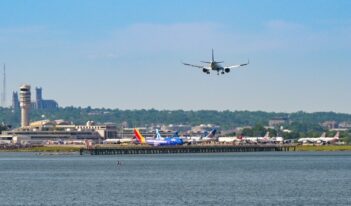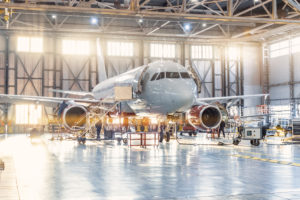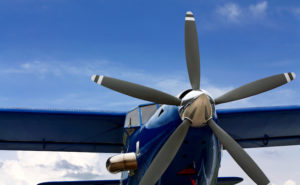
The FAA is proposing updates to a rule governing supersonic aircraft testing.
The Concorde—the aviation world’s most famous supersonic passenger aircraft—has been out of service since 2003, following a deadly crash in 2000 and a general decline in passenger numbers after the September 11, 2001 attacks in the United States. Since that time, no commercial airline has flown supersonic passenger aircraft.
But the U.S. Federal Aviation Administration (FAA) has observed that advancements in aircraft technology may make supersonic air transport viable again. As a result, the agency has proposed updates to its rule governing the testing and usage of supersonic passenger planes.
Ordinarily, supersonic flight over the United States is prohibited. Civil aircraft with a top speed greater than Mach 1—about 767 miles per hour—can only operate over the United States after obtaining special authorization from the FAA. The proposed rule aims to streamline this process and provide updated criteria concerning noise levels.
Noise issues have always presented unique problems for supersonic aircraft. Concorde service, for example, faced repeated opposition from residents living near airports due to engine noise complaints. Pilots often took special routes in and out of airports in populated areas because countries did not allow the Concorde to fly at supersonic speeds over land, as the sonic boom would be a disruption to those on the ground.
The current version of the rule requires an aircraft operator to show that the operations of a supersonic aircraft will not cause a measurable sonic boom at the surface in all foreseeable operating conditions.
The proposed rule requires permit applicants to specify the times of day during which they expect to conduct supersonic flights. It also clarifies that applicants can request an area for test flights and adds language encouraging applicants to test supersonic aircraft over oceans rather than over land.
In response to the proposed rule, the FAA received over 200 comments. Most of these comments came from individuals, but aircraft manufacturers, industry groups, municipalities, and advocacy groups also provided feedback.
Groups within the aviation industry viewed the FAA’s proposal favorably. GE Aviation, a major manufacturer of aircraft engines and mechanical systems, viewed the proposed rule as an “important first step” toward enabling “environmentally responsible supersonic aircraft.”
Aircraft manufacturer Lockheed Martin saw the proposed rule as “critical groundwork” for future regulations concerning domestic supersonic flights. Both GE and Lockheed Martin did offer modifications, however, such as suggesting that data from tests over the ocean be used to model the effects of noise over land.
Aviation startups have likewise expressed general approval for the proposed rule. A common contention, though, was that the FAA unreasonably required test flights to produce no measurable effects from sonic booms. One company, Aerion, suggested that this would “effectively create a ban on all supersonic flights,” while New Frontier Aerospace suggested that the FAA establish a threshold for noise level.
Other organizations from the aviation world also supported the proposal. The American Institute of Aeronautics and Astronautics commended the FAA for its “balanced approach” in weighing the burden on manufacturers versus the public interest. The Aircraft Owners and Pilots Association also supported the proposal, but recommended that the FAA more closely consider the effects of supersonic test flights on other air traffic.
A large majority of comments from the general public, however, opposed the proposal. Residents living near airports expressed worry that supersonic aircraft would only increase the noise levels in their neighborhoods.
Environmental concerns were also a factor in many comments. The Center for Biological Diversity, an environmental advocacy organization, criticized the FAA for ignoring the specific effects of supersonic aircraft on climate change, since these aircraft usually consume five to seven times more fuel per passenger than standard passenger aircraft.
Aside from updating noise level requirements, the proposed rule also aims to simplify the application for supersonic aircraft testing permits. The current rule aimed to authorize test flights of new and experimental aircraft. When the rule was issued in 1973, the FAA expected about 20 applications per year. The actual number of applications since then, though, has been far lower than anticipated. The FAA has only issued three test flight authorizations since then—two of which were for flights testing an experimental space vehicle, and only one to an aircraft manufacturer. That said, the FAA expects to see a rise in applications due to recent increased interest in civil supersonic aviation.
The proposed rule notes that the application requirements are poorly arranged. These requirements are not found in the actual text of the current rule but in an appendix to the rule. Furthermore, important provisions are scattered across “three awkwardly organized sections” and sometimes feature inconsistent language. The FAA’s proposed rule would arrange these provisions in a more “user friendly” structure and within the body of the regulation itself.
The proposed rule also would clarify the requirements for an application, something the current version of the rule fails to do. The current rule states that an applicant must submit an application “in a form and manner prescribed by the Administrator.” Applicants had interpreted this provision to mean that they had to fill out a specific form, but the FAA had never created such a form. Applicants were also confused in the past about where to send their applications when completed, leading to delays. The FAA proposes to specify that applicants should send their materials to the FAA’s Office of Environment and Energy.
The FAA has yet to issue a final version of its proposed rule, and it is uncertain how long it will take to do so. But whenever the final rule comes out, the FAA will need to have incorporated or responded to the concerns expressed in the public comments.



